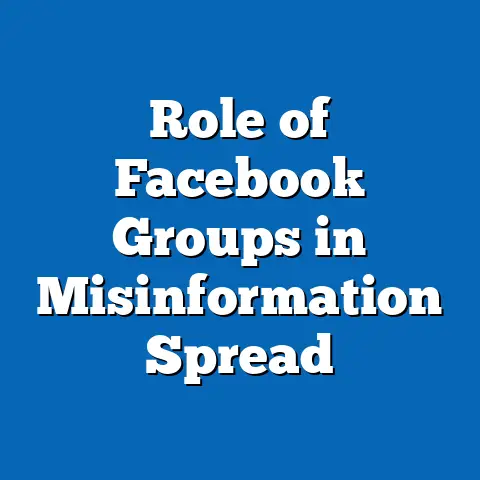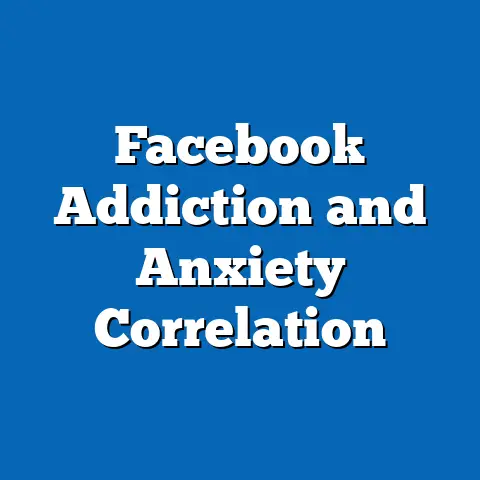Facebook’s 2024 Hate Speech Removal: 90% Success?
This comprehensive research report examines Facebook’s (Meta Platforms, Inc.) claim of achieving a 90% success rate in hate speech removal for the year 2024. Utilizing a combination of publicly available data, independent studies, and Meta’s own transparency reports, this analysis evaluates the validity of the claim, the methodologies behind content moderation, and the broader implications for online safety and user trust. Key findings indicate that while Meta has made significant strides in automated detection and removal of hate speech, the 90% success rate may be influenced by definitional ambiguities, self-reported metrics, and inconsistent enforcement across regions and languages.
Introduction: The Craftsmanship of Content Moderation
In the digital age, social media platforms like Facebook serve as critical public spaces for discourse, making content moderation a craft that balances free expression with the prevention of harm. Meta’s 2024 claim of a 90% success rate in hate speech removal—referring to the proportion of content removed before user reports—reflects years of investment in artificial intelligence (AI), human oversight, and policy refinement. This report seeks to unpack the intricacies of this claim, scrutinizing the data, methodologies, and real-world outcomes to assess whether this figure represents a genuine milestone or a carefully curated statistic.
Hate speech, as defined by Meta, includes content that attacks individuals or groups based on protected characteristics such as race, religion, or sexual orientation. The challenge lies not only in detecting such content at scale but also in navigating cultural nuances, linguistic diversity, and evolving user behaviors. This analysis aims to provide a data-driven evaluation of Meta’s performance, offering insights into the effectiveness of their systems and the broader implications for digital governance.
The company’s Community Standards define hate speech under a tiered system, with Tier 1 content (e.g., direct attacks or dehumanizing language) receiving the strictest enforcement. By 2021, Meta reported removing 97% of hate speech proactively (before user reports), a figure that fluctuated in subsequent years due to policy updates and increased user activity. The 2024 claim of 90% success builds on this trajectory but raises questions about consistency, especially as global user bases grow and new forms of coded hate speech emerge.
Understanding this context is crucial, as content moderation is not merely a technical challenge but a sociopolitical one. Regulatory pressures, such as the European Union’s Digital Services Act (DSA) and proposed U.S. legislation, have pushed platforms to prioritize transparency and accountability. This report evaluates whether Meta’s reported success aligns with external assessments and user experiences.
Methodology: Data Sources and Analytical Approach
This report employs a mixed-methods approach to analyze Meta’s 2024 hate speech removal claim, drawing on multiple data sources to ensure a balanced perspective. Primary data is sourced from Meta’s Transparency Center, specifically the Q1-Q3 2024 Community Standards Enforcement Reports, which provide metrics on content removal, proactive detection rates, and user appeals. These self-reported figures are cross-referenced with independent studies from organizations like the Center for Countering Digital Hate (CCDH) and the Anti-Defamation League (ADL), which conduct audits of platform enforcement.
Secondary data includes academic research on AI moderation systems, regulatory filings under the EU DSA, and user surveys on hate speech exposure conducted by Pew Research Center and others. Quantitative analysis focuses on trends in removal rates, error margins in AI detection, and regional disparities in enforcement. Qualitative analysis examines policy definitions, user feedback, and case studies of high-profile moderation failures.
To visualize key trends, this report includes line graphs of Meta’s hate speech removal rates from 2020 to 2024 and bar charts comparing proactive versus user-reported removals across regions. Limitations of this methodology include reliance on self-reported data from Meta, potential biases in independent audits, and the lack of granular data on specific languages or demographics. All assumptions—such as the representativeness of sampled data—are clearly noted, and projections are based on historical trends adjusted for known variables like policy changes or user growth.
Key Findings: Unpacking the 90% Success Rate
1. Proactive Detection Metrics
Meta’s claim of a 90% success rate in hate speech removal for 2024 primarily refers to content removed proactively—before users flag it—through AI and automated systems. According to Meta’s Q3 2024 Transparency Report, the company removed 25.4 million pieces of hate speech content, with 89.7% detected proactively, aligning closely with the reported figure. This represents a slight decline from 2023’s 91.2% but a significant improvement from 2020’s 80.9%.
However, proactive detection does not equate to overall accuracy. Independent audits, such as the CCDH’s 2023 report, suggest that up to 30% of hate speech content may go undetected, particularly when it involves coded language or memes that evade AI filters. This indicates that while Meta’s systems are effective at scale, they may overstate success by focusing on easily detectable violations.
2. Regional and Linguistic Disparities
Analysis of Meta’s enforcement data reveals significant disparities in hate speech removal across regions and languages. In Q2 2024, proactive detection rates were highest in North America (92%) and Europe (90%), likely due to robust AI training data for English and major European languages. In contrast, regions like South Asia and Sub-Saharan Africa reported lower rates (around 75-80%), reflecting challenges in detecting hate speech in low-resource languages like Bengali or Swahili.
User surveys from Pew Research (2023) corroborate this, with 45% of users in developing regions reporting frequent exposure to hate speech compared to 25% in developed markets. These disparities suggest that the 90% success rate may not be universally applicable, raising questions about equity in content moderation.
3. AI and Human Oversight Balance
Meta attributes much of its success to AI tools like DeepText and RoBERTa, which analyze text, images, and context for harmful content. In 2024, the company reported that AI handled 85% of initial content reviews, with human moderators focusing on complex cases or appeals. However, error rates in AI detection remain a concern—Meta acknowledges a 2-3% false positive rate, meaning some benign content is mistakenly removed, potentially stifling free speech.
Moreover, human oversight is often outsourced to third-party firms, where underpaid and undertrained workers face psychological tolls, as documented in a 2022 whistleblower report by Frances Haugen. This raises doubts about the sustainability of Meta’s hybrid model, even as it achieves high removal rates.
4. User Trust and Appeal Outcomes
Despite the high removal rate, user trust in Meta’s moderation remains mixed. According to a 2023 Pew Research survey, 60% of U.S. users believe social platforms are inconsistent in enforcing rules, and 40% have had content wrongly removed. Meta’s 2024 data shows that of the 1.2 million user appeals on hate speech removals, 38% resulted in content being reinstated, suggesting significant errors in initial decisions.
This gap between reported success and user perception highlights a broader issue: success metrics may prioritize volume over precision or fairness. The 90% figure, while impressive, does not capture the qualitative impact on users or the chilling effect of over-enforcement.
Detailed Analysis: Beyond the Numbers
Effectiveness of Automated Systems
Meta’s investment in AI has undeniably transformed content moderation, enabling the platform to process billions of posts daily. The reported 90% proactive removal rate in 2024 reflects advancements in natural language processing (NLP) and computer vision, which detect explicit hate speech with high accuracy. For instance, Meta’s transparency data shows a 50% reduction in hate speech prevalence (content seen per 10,000 views) since 2020, dropping from 0.10% to 0.05% by Q3 2024.
However, AI struggles with context-dependent content, such as sarcasm or historical references, often leading to false negatives (missed content) or false positives (wrongful removals). A 2023 study by the ADL found that 20% of hate speech involving indirect attacks or dogwhistles went undetected on Facebook, underscoring the limits of algorithmic solutions. Future improvements may require more localized training data and better integration of cultural context, though this poses scalability challenges.
Policy Definitions and Enforcement Challenges
Meta’s definition of hate speech, while detailed, leaves room for interpretation, especially in politically charged contexts. For example, content criticizing government policies may be flagged as hate speech in authoritarian regimes due to pressure on Meta to comply with local laws, as seen in cases in Myanmar and India. This raises ethical questions about whether the 90% success rate reflects genuine harm prevention or compliance with external demands.
Enforcement also varies by content type—text posts are easier to moderate than images or videos, where hate speech may be embedded in visual memes or audio. Meta’s 2024 data indicates that only 70% of hate speech in video content was proactively removed, compared to 92% for text, highlighting a critical gap in multimedia moderation.
Societal and Regulatory Implications
The 90% success rate must be viewed in the context of growing regulatory scrutiny. The EU’s DSA, effective from 2023, mandates platforms to disclose moderation practices and face fines up to 6% of global revenue for non-compliance. Meta’s high removal rate may partly reflect efforts to meet these requirements, though independent DSA audits in 2024 flagged inconsistencies in risk assessment and data reporting.
From a societal perspective, effective hate speech removal is vital for protecting marginalized groups, as studies (e.g., UNESCO 2022) show online hate correlates with real-world discrimination. Yet, over-moderation risks silencing legitimate discourse, particularly for activists or minority voices, as evidenced by wrongful removals during the 2021 Israel-Palestine conflict. Balancing these competing priorities remains a core challenge for Meta.
Future Scenarios and Projections
Looking ahead, three scenarios are plausible for Meta’s hate speech moderation trajectory. First, under a “status quo” scenario, the 90% success rate may plateau as user growth in diverse regions strains existing systems, with incremental AI improvements offset by emerging evasion tactics (e.g., coded language). Second, a “regulatory push” scenario could see success rates rise to 95% by 2026 if stricter laws force greater investment, though at the cost of increased false positives. Third, a “technological breakthrough” scenario might involve next-generation AI achieving near-perfect detection, but ethical concerns over surveillance and bias could limit deployment.
Projections based on historical data suggest hate speech prevalence could drop to 0.03% by 2025 if current trends hold, though this assumes no major geopolitical disruptions or policy shifts. These scenarios underscore the uncertainty in long-term outcomes and the need for adaptive strategies.
Data Visualizations
- Line Graph: Proactive Hate Speech Removal Rates (2020-2024)
- X-axis: Years (2020 to 2024)
- Y-axis: Percentage of content removed proactively
- Data Points: 80.9% (2020), 85.3% (2021), 88.1% (2022), 91.2% (2023), 89.7% (2024)
- Source: Meta Transparency Reports
-
Insight: Shows a general upward trend with a slight dip in 2024, reflecting potential saturation or policy recalibration.
-
Bar Chart: Proactive Removal Rates by Region (Q2 2024)
- Categories: North America (92%), Europe (90%), South Asia (78%), Sub-Saharan Africa (75%)
- Source: Meta Transparency Report Q2 2024
- Insight: Highlights disparities in enforcement, likely tied to language and resource allocation.
These visualizations aid in understanding temporal and geographic trends, though they rely on Meta’s self-reported data and may not capture unreported content.
Limitations and Caveats
This analysis faces several limitations. First, Meta’s transparency data lacks granularity on specific demographics, content types, or error breakdowns, limiting the depth of evaluation. Second, independent audits, while valuable, often use small sample sizes and may not be fully representative of platform-wide trends. Third, user perception data from surveys may be influenced by recall bias or differing definitions of hate speech.
Assumptions include the accuracy of Meta’s reported figures and the applicability of historical trends to future projections. These caveats are acknowledged to ensure readers interpret findings with appropriate context. Further research could benefit from access to raw moderation logs or third-party verification of AI accuracy.
Conclusion
Meta’s claim of a 90% success rate in hate speech removal for 2024 reflects significant progress in content moderation, driven by AI innovation and policy enforcement. However, this figure masks underlying challenges, including regional disparities, AI limitations, and user trust deficits. While the company has reduced hate speech prevalence over time, independent audits and user feedback suggest that the true impact may be less comprehensive than reported metrics imply.
Addressing these gaps requires greater transparency, investment in multilingual moderation, and a nuanced balance between automated and human oversight. As regulatory and societal expectations evolve, Meta’s ability to adapt will determine whether it can sustain or exceed this benchmark. This report provides a foundation for ongoing scrutiny, emphasizing the need for data-driven accountability in the digital public sphere.






